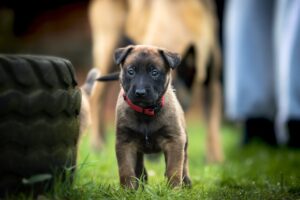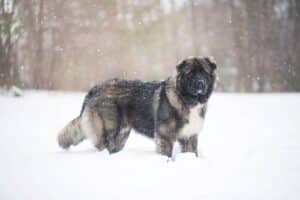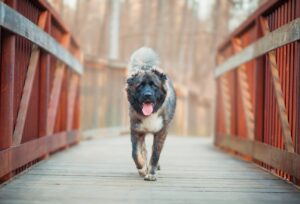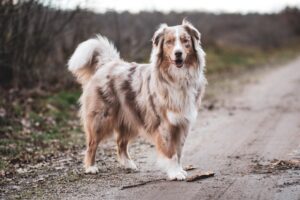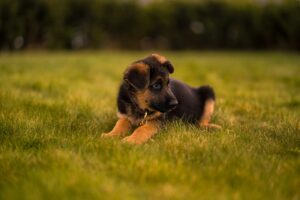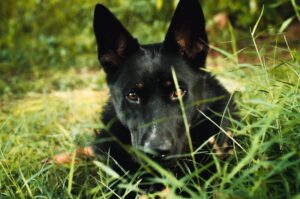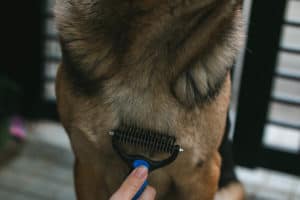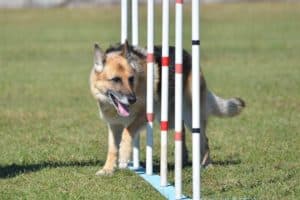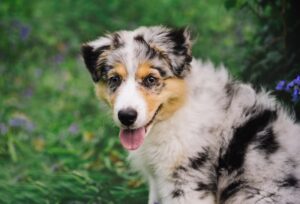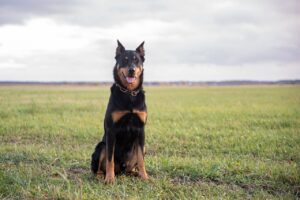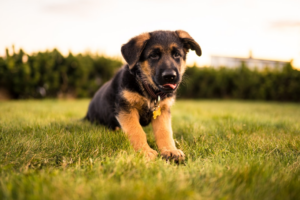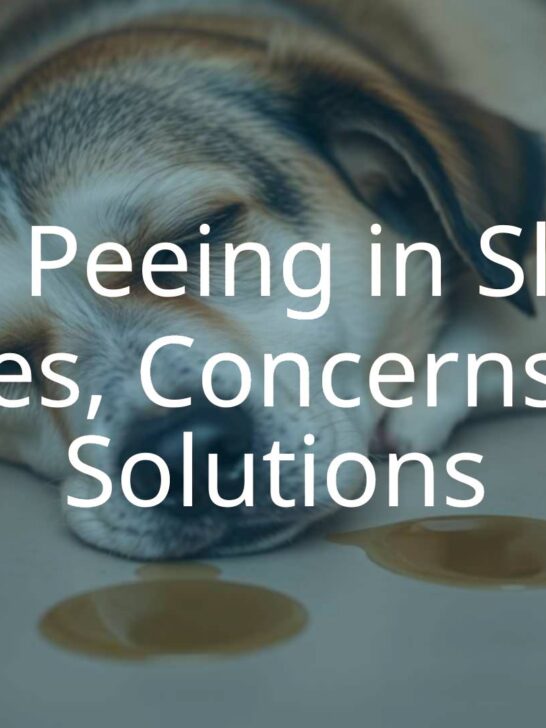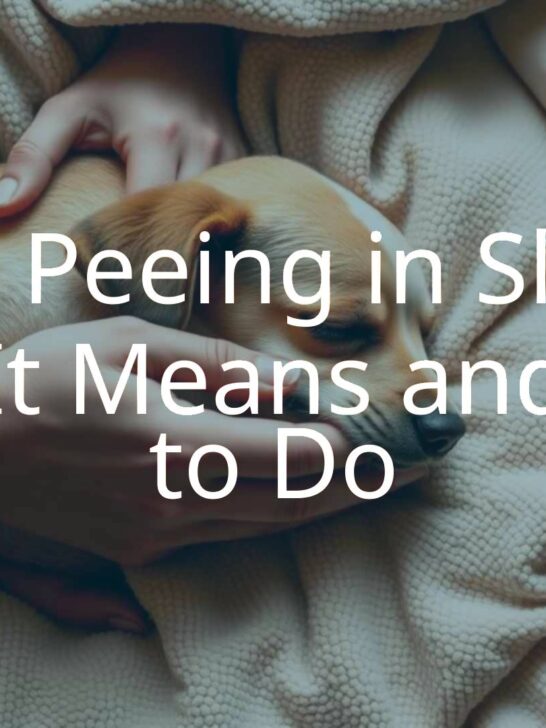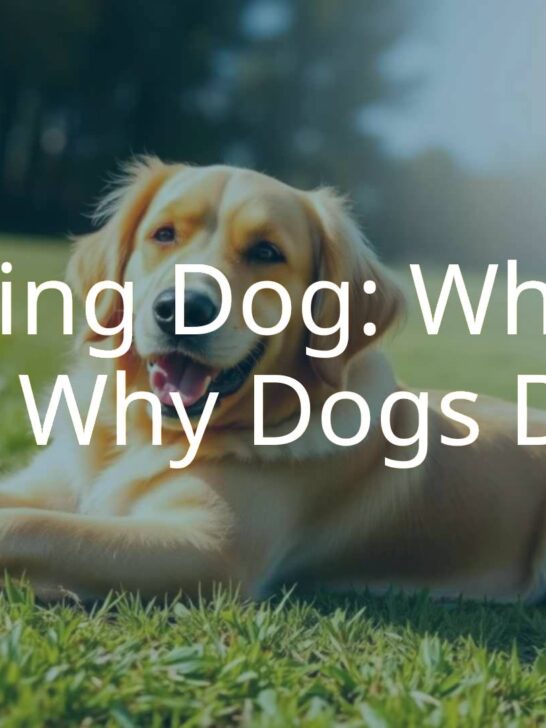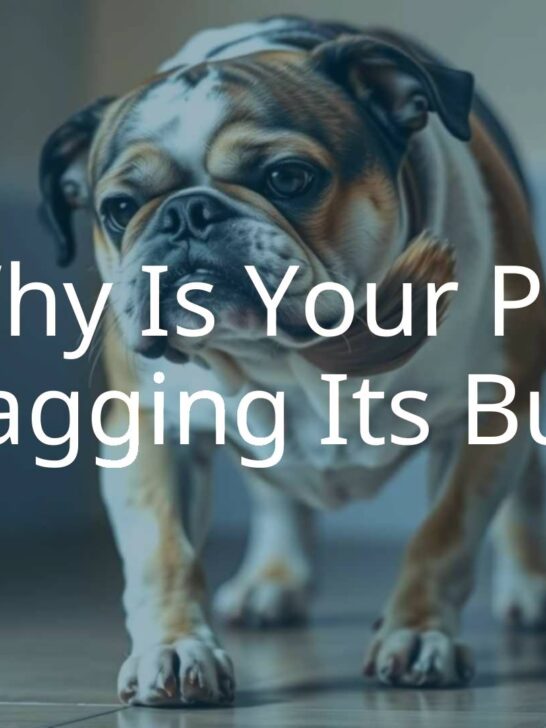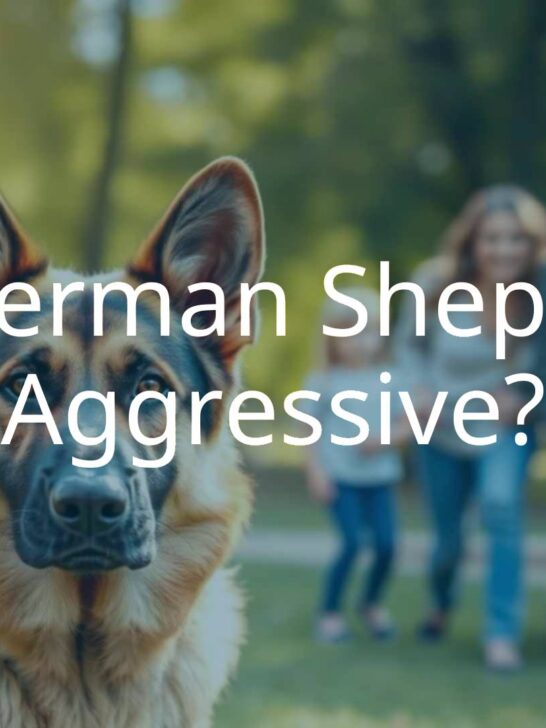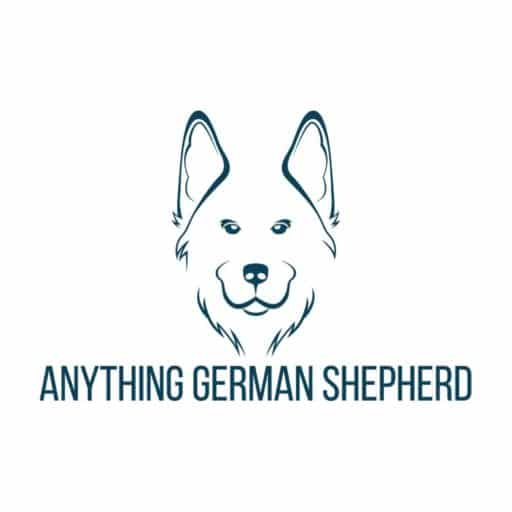Reactive Dog: Understanding, Training, and Supporting Them
A reactive dog reacts in an extreme way to situations most dogs would find normal. Instead of staying calm, they may bark loudly, lunge, or growl just at the sight of another person or dog, turning a simple walk into a stressful event. These strong reactions usually come from emotions like fear, excitement, or frustration, not pure aggression.
Knowing about reactivity is very important for dog owners because it can affect the dog’s happiness and daily life for both the dog and the owner. Reactivity is often confused with aggression, but it’s a different behavior problem that needs its own kind of management and training.

What Is a Reactive Dog?
A reactive dog responds more strongly or for a longer period than most dogs to things around them. For example, while many dogs might bark once or twice at a stranger, a reactive dog may keep barking or get so focused they can’t pay attention to anything else.
Reactivity is an emotional reaction caused by things like fear or excitement. It’s not because the dog is “bad”-they’re just having trouble handling what’s going on around them.
How is Reactivity Different from Aggression?
Reactivity and aggression can look a lot alike: both may include barking, growling, or lunging. The main difference is the reason behind the behavior. Reactivity is usually caused by overwhelming feelings like fear or frustration, and is often about wanting something to go away or reach something exciting. Aggression is about wanting to cause harm. A reactive dog looks scary but usually doesn’t intend to hurt anyone; they just want to control the situation or escape it. However, if their signals are ignored, reactivity can become defensive aggression.
In simple terms: a reactive dog is saying, “Go away!” or “Let me at it!”, while an aggressive dog is saying, “I will hurt you if you don’t leave.”
What Are the Signs of Reactivity in Dogs?
Reactivity doesn’t always look the same, but it may include:
- Vocal Sounds: Barking (especially high-pitched or constant), growling, snarling, whining
- Lunging or Pulling: Trying hard to get to (or away from) a trigger, even escaping a harness or collar
- Body Signals: Watching everything closely, tense body, wide eyes, raised hair on the back, ears up or pulled back, showing teeth, stiff or tucked tail
- Restless or Wild Movement: Jumping, spinning, or running around from excitement or stress
- Hiding or Running Away: Trying to hide behind you, cowering, or pulling back in fear
- Not Responding: Not able to listen, even to favorite commands, when triggered
Reactivity isn’t just a leash problem. It can happen indoors, outdoors, or anywhere a dog feels overloaded.
Common Myths About Reactive Dogs
Many people think all reactive dogs are aggressive. That’s not true. While reactivity can sometimes turn into aggression, it usually starts as fear, nervousness, or excitement-not a wish to hurt anyone.
People may also label reactive dogs as “bad” or “disobedient.” But these dogs are most often scared or overwhelmed, not purposely behaving badly. Punishing reactivity (like yelling or physical corrections) doesn’t help and can make things worse, making the dog more afraid or even encouraging them to skip warnings and go straight to biting.
Another myth is that all dogs should love meeting everyone. That’s just not realistic. Dogs, like people, have different likes and comfort levels around others. Pressuring a reactive dog to “get over it” or pushing them into uncomfortable settings can make their behavior worse.
What Makes a Dog Reactive?
Many things can contribute to a dog becoming reactive, often a mix of genetics, life experience, the environment, and health.
Genetics and Breed
Some dogs are more likely than others to be reactive because of their genetic background. For example, if a puppy’s parents are anxious, the puppy may be too. Certain breeds, such as herding dogs, may react more to movement because of what they were bred for, like chasing things.
Past Trauma and Experiences
A scary experience-like being bitten, yelled at, or handled roughly-can leave a lasting impact. Repeated stress or harsh training can also make a dog more likely to react strongly to situations later on, especially if their gentle signals are ignored.
Lack of Socialization
Puppies need to see different people, places, and animals when they are young. If this doesn’t happen, they may grow up scared of new things and react intensely when faced with the unknown.
Pain and Medical Problems
Sometimes, a dog is reactive because something hurts. Chronic pain or reduced sight and hearing can make dogs more sensitive and likely to overreact. Sudden or worse reactivity that can’t be explained by training or routine should be checked by a vet first.
Stressful Environments
Living with constant noise, crowds, or frequent exposure to triggers raises stress hormones and lowers a dog’s ability to cope. Even well-meaning handling that makes the dog nervous can add to the problem. Environmental stress can make mild reactivity much worse.
Common Types and Triggers of Dog Reactivity
Reactivity shows up in different ways, which are often grouped by what sets off (triggers) the strong reaction. Knowing these types helps with training your dog.
Leash Reactivity
Many dogs seem fine off-leash but react when on a leash, barking, growling, or pulling hard. This is usually because the leash prevents them from approaching or avoiding things as they want, leading to stress and frustration.
Dog-to-Dog Reactivity
Some dogs only react this way to other dogs. Not enough social experience as a puppy, or a scary encounter with another dog, can make this worse. Even friendly dogs can get overwhelmed in situations with lots of other dogs.
Reactivity Towards People
Some dogs bark, hide, or lunge just at people, or a certain type of person (like men, children, or people wearing hats). This often comes from being uneasy, especially if they didn’t meet many types of people as puppies or had a bad experience.
Reactivity To Other Animals
Many dogs react strongly to animals like cats, squirrels, or other wildlife. Sometimes this is because their instinct wants to chase, or just because they are excited or unsure what to do.
Home and Environmental Triggers
Some triggers are common in the home-such as the doorbell, visitors, or loud household noises like vacuums. Others include loud outdoor sounds, crowded places, or changes in routine. Identifying your dog’s triggers is key for successful management.
What Are the Signs and Body Language of a Reactive Dog?
Understanding how your dog looks or acts before reacting can help you avoid problems and keep them comfortable. Here are some common warning signs:
Warning Signs
- Constantly looking around (hypervigilant)
- Raised hair on their back and neck
- Sudden stopping/freezing
- Wide eyes or a hard stare
- Ears forward or flat back
- Lip licking, yawning when not tired, or tight mouth
- Stiff or tucked tail
- Pacing or being unable to settle
- Sniffing or scratching with no reason (displacement behaviors)
- Growling, whining, or sudden barking
- Trying to get away or hide
- Quick, excited movement or jumping up if overstimulated
Always look at the whole situation. For example, a tucked tail may show fear in one setting, but a stiff, high tail might mean alertness or stress in another.
Thresholds: When Does the Behavior Start?
Every dog has a set point where they are okay seeing a trigger, and a point where they can’t handle it. Reactive dogs usually have a much lower limit than others. Stress from other things, tiredness, or lots of triggers at once (“trigger stacking”) all make it easier for a dog to go over their limit and react.
Below threshold, your dog can pay attention and respond. When they go over their threshold, emotions take over and thinking stops, making calm behavior very difficult.
Can Reactivity Turn Into Aggression?
Reactivity can lead to aggressive behavior if not managed well. Because a reactive dog is already upset, they’re more likely to bite or snap if they feel they have no other option.
How to Spot Escalating Behavior
- Reactions are getting more frequent, strong, or last longer
- The dog stops giving earlier warning signs and jumps straight to growling or snapping
- Lunging or snapping becomes clearly aimed at the trigger
- Any sort of physical contact (like nipping or snapping at air) happens
Because the stakes are high, it’s important to step in early and use positive methods to help your dog learn to handle their feelings and triggers differently.
How to Help and Train a Reactive Dog
Helping a reactive dog takes time, patience, and understanding. There are two main parts to the process: management (preventing unwanted behavior from happening) and training (helping the dog feel and act differently).
Identifying and Avoiding Triggers
First, figure out what causes your dog’s reactions. Take notes on when and where incidents happen, what the trigger is, and how close it can be before your dog reacts.
Once you’ve found the triggers, try to avoid them while working on training. This may mean walking at quieter times, crossing the street to avoid other dogs or people, using barriers at the house, or adding window covers if needed. The aim is to set your dog up to be calm so they can learn.
Management for Safety
Even with careful avoidance, triggers will pop up. Safety steps include:
- Barriers: Use gates in the house or keep rooms closed off
- Correct Gear: Harnesses or collars that fit well and are hard to escape, plus a sturdy leash
- Muzzles: A basket muzzle (if needed and introduced positively) for extra safety
- Redirection: Teach your dog to look at you for treats when they see a trigger
- Escape Plans: Have a route ready to move away quickly-like ducking behind a car or stepping through a doorway
- “Find It” Game: Toss treats on the ground in the opposite direction to move your dog and break their focus
Management keeps everyone safe and prevents bad habits, while training works on deeper change.
Changing Reactions: Counter-Conditioning and Desensitization
These two methods help your dog gain confidence and feel better about their triggers using positive rewards:
- Desensitization: Show your dog the trigger far enough away that they stay calm. Slowly decrease the distance over time as your dog stays relaxed.
- Counter-Conditioning: Pair seeing the trigger with food or something your dog loves. The aim is for your dog to go from fear or excitement to a positive expectation, looking forward to treats instead of reacting.
For example, if your dog barks at bikes, start far from a bike path. When a bike appears, feed treats until it passes. Gradually move closer as your dog stays calm.
Using Rewards
- High-Value Treats: Choose especially tasty treats to keep your dog interested
- Reward Fast: Treat your dog immediately when they stay calm or look at you near a trigger
- Calm Rewards: Give treats for relaxed behavior even in low-stress times
- Teach Alternate Behaviors: For example, “look at me” makes it impossible to focus on barking at a trigger
- Keep Your Dog Busy: Play games and provide puzzles to prevent boredom, which can make reactivity worse
Set Realistic Goals
Helping a reactive dog often takes months, not weeks. Your goal might not be a perfectly sociable dog, but rather a calm dog during walks or one that recovers quickly after seeing a trigger. Celebrate small improvements and keep going.
Can Training Help a Reactive Dog?
With regular positive training, most reactive dogs can get much better, although every dog’s progress is different. Some things that affect progress are:
- How often you train and how consistent you are
- Your patience and calmness
- How serious or long-lasting your dog’s reactivity has been
- Whether a medical problem contributes (which needs to be treated by a vet)
- How well you can avoid triggers during daily life
- Your dog’s natural personality
- Getting support from a knowledgeable professional
| Expected Progress | Time Frame |
|---|---|
| Small improvements (fewer reactions, quicker recovery) | Weeks to a few months |
| More consistent calmness and ability to handle triggers | Several months to a year |
| Long-term comfort, still avoiding some triggers | Ongoing |
Remember, stress hormones take days to clear after a strong reaction, so give your dog time to recover before more training.
When Should You Ask a Professional for Help?
If you’re not making progress, or feel unsure or unsafe, it’s a good idea to ask for professional help. A certified trainer or behaviorist can create a plan suited to your dog and keep everyone safe.
Signs You Need a Trainer or Behaviorist
- Reactions are getting worse, strong, or more common
- You feel nervous about handling your dog
- Training is stressful or overwhelming for you
- No improvement after trying on your own for several weeks
- You can’t figure out the triggers or what your dog is saying with their body language
- Your dog is almost always over threshold and reacts too easily
Reasons to Visit the Vet
Always check with your vet if your dog’s behavior suddenly changes or gets much worse. Medical issues like pain, hormone imbalance, or sensory loss might be the cause. No amount of training will help if your dog is sick or hurting. Medication combined with training may sometimes be needed for anxious or very reactive dogs.
Managing Daily Life with Your Reactive Dog
Life with a reactive dog is hard work at times, but you can make it better with planning and support.
Keeping Everyone Safe
- Keep an eye out for triggers and avoid them when possible
- Speak up for your dog and ask people for space
- Use proper gear (harness, leash, muzzle if suggested by your trainer)
- Don’t put your dog in overwhelming situations such as busy parks or events
- Make your home escape-proof and limit window or door access as needed
How to Talk to Friends, Family, and Others
- Explain your dog’s needs and that they’re not being “bad”
- Set clear rules for people who visit, like not approaching or petting without asking
- Plan ahead for gatherings-use a crate, a quiet room, or a trusted sitter
- Give detailed information to anyone else who may care for your dog
Looking After Yourself
- Be kind to yourself and accept this is a tough job
- Take breaks from training when you need to
- Don’t expect perfection-focus on any progress
- Do things without your dog sometimes to relax
- Consider therapy or talking to others for mental health support if needed
Getting Support
- Find in-person or online groups for owners of reactive dogs
- Look for positive training advice and supportive communities online
- Contact a trainer or behaviorist for extra guidance
How to Prevent Reactivity in Puppies
You can help prevent reactivity by socializing your puppy early in a safe, positive way.
Early Socialization Tips
- Let your puppy meet many types of people, see different places, hear new sounds, and interact with a variety of animals
- Pair every new experience with praise, treats, or gentle play
- Keep outings short and pleasant rather than long and tiring
- Choose puppy classes run with positive, reward-based methods
- Watch all playtimes and stop if your puppy seems scared or overwhelmed
- Follow your vet’s advice about when to start socialization based on vaccination status
Safe Ways to Introduce New Things
- Watch your puppy’s body language-if they seem scared, move farther away or stop the session
- Don’t throw the puppy into large, noisy, or busy areas right away
- Use treats and praise every time your puppy is calm near something new
- Protect your puppy from scary or rough encounters
- If getting a puppy, try to meet the parents for signs of friendly or confident behavior
Early, positive experiences are the best way to raise a confident, less-reactive dog.
Reliable Resources and Help for Owners
- Certified Dog Trainers (CPDT-KA): Can provide step-by-step training and teach you management and positive methods
- Behavior Consultants (CBCC-KA): Good choice for more serious or complicated cases
- Veterinary Behaviorists (DACVB): These vets can help with behavior and medical causes, and offer medication if needed
- Online Forums/Groups: Join groups focused on positive training and reactive dogs for support and advice
- Local Classes or Meetups: Find safe, trainer-guided spaces for reactive dogs to practice
- Quality Reading and Websites: Look for tips from places like the AKC, universities, or well-known animal behavior experts
- Your Regular Vet: Always check for medical issues first
- Support Hotlines: Some animal charities provide free advice lines
Choose trainers and resources that use reward-based, force-free methods and avoid punishment-based advice. Having help will make caring for your reactive dog easier and improve life for both of you.

